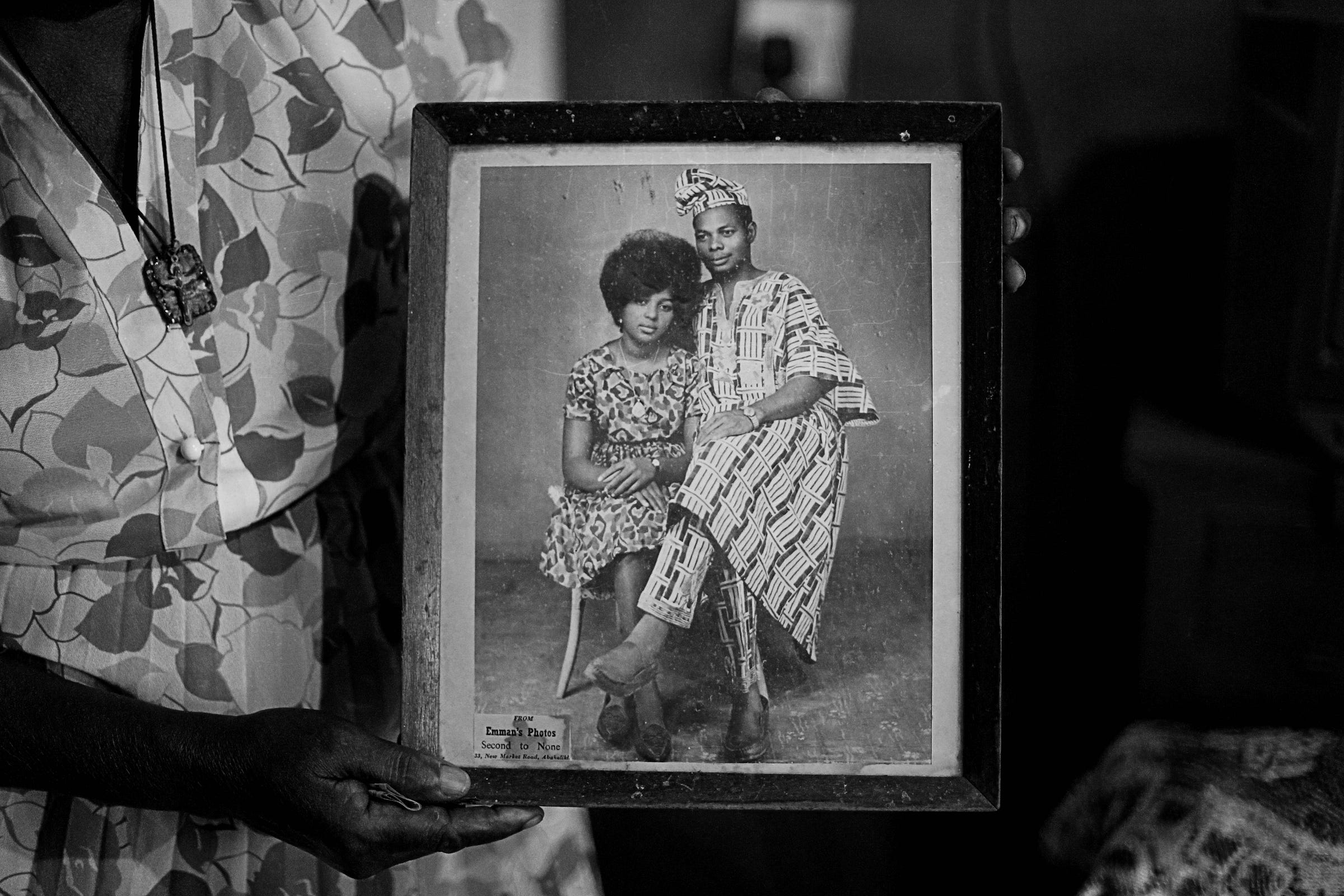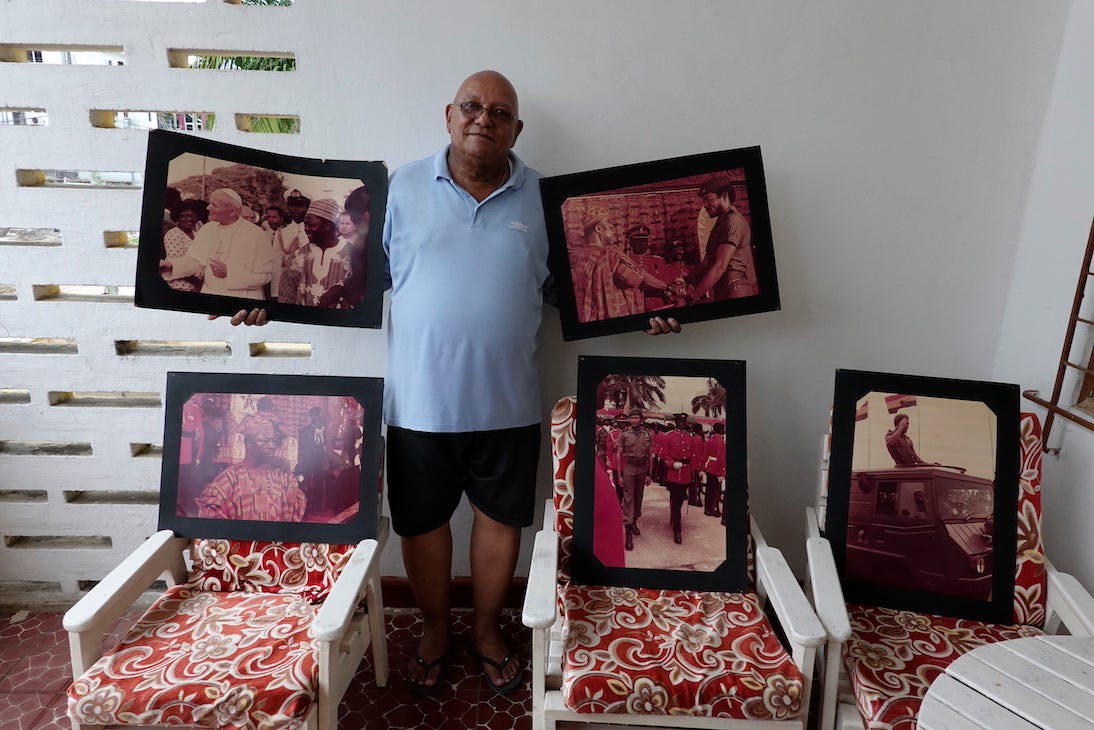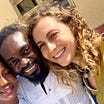

A photo can preserve things that were lost, and a photo can be a thing that is lost.
Our assignment: “choose a ‘family photograph’ (loosely defined) and pair it with another in the TP collection that aligns in form or mood or theme. So if a photo from [your] exhibition works, that's perfect.”
A family can be two partners, or several, or a town.
A family can be a nation, a religion, a crown.
A photograph can be a print, a film, a file.
A photograph can be burnt.
And so can a heart.
¶
The first photograph by Nneka Iwunna Ezemezue frames a woman’s struggle to hold onto the memory of her late husband. The torso and hands of a figure in a dress holds a black-and-white studio photograph of a young man and woman in fine wax print fabric, tightly pressed together and dripping with cool. The man died years earlier. According to the artist, when the woman refused to participate in certain funeral rites that the town insisted on, she was kicked out of the house by the second wife, and her possessions with her husband were burnt. All she has left of him is the picture.
The second photograph by Jesse Weaver Shipley layers dual narratives of love and loss: revolutionary leaders’ struggles to hold together their nation, and an independent photographer’s struggle to hold together his collection. The leaders in question are Flt. Lt. Jerry John Rawlings and President-elect Dr. Hilla Limann, on the occasion of Rawlings handing over power to three months after his 1979 coup (the first of two). The photographer in question is Gerald Annan-Forson, who was Rawlings’s schoolmate in the 1960s, and who became a freelance photographer documenting the nation’s political flux in the late 20th century. Rawlings and Limann navigate the threshold between authoritarian rule and democratic government, and Annan-Forson navigates the transition between analogue and digital technology. Shipley, meanwhile—the artist who nests the pictures-within-the-picture—navigates how to tell stories of an aging generation.
If we treat the idea of “family” loosely, “Ghana” could be the collective body, and the men in front of and behind the camera could be both its members and narrator/actors. Their political struggles with structure and representation might not be so different from the personal struggle of the widow who mourns her husband. Where lies the fine line between picture-as-potential and picture-as-prison? How do we (learn to) hold onto images, and how do we (learn to) let them go? ¶
The photograph of Annan-Forson and the related film “Burnt Images” (2022) are part of Routes of Rebellion, an exhibition of film and media by Jesse Weaver Shipley made through three decades of research in and connected to Ghana. As co-curators, we see the exhibition as an opportunity to explore the materiality of memory and the precarity and potentials of socially distributed archives. Routes of Rebellion opened at Nuku Studio on 4th November and continues through 29th February 2024, in collaboration with Red Clay, Tamale. Follow Nuku Studio, Robin Riskin, and P.N.O. Ankrah on Instagram.
About the authors
Robin Riskin and P.N.O. Ankrah are curating artists who grew their practice through the community movement known as blaxTARLINES KUMASI. As co-curators on some of the early blaxTARLINES exhibitions, Riskin and Ankrah developed rhythms for working together on artist-led, site-specific, multi-sited, and slow-growth projects. In their independent work, they expanded upon blaxTARLINES’s tactics of ecological, interdisciplinary, and intergenerational curating. While Riskin’s experimental exhibitions have focused on oral, digital and multi-vocal language, Ankrah’s creative productions have been importing craft and communal processes. Like their teacher kąrî’kạchä seid’ou, both Ankrah and Riskin are interested in the transformative potentials of art.
This is the #11 edition of KINDRED, a series on TENDER PHOTO. Each contributor selects a photograph from their family or personal album, pairs it with another photograph from the Tender Photo archive, and writes a short reflection on why they have selected both photographs. The idea is to find an analogy between two photographs that might be similar or dissimilar in composition, but connected to an experience, emotion, or idea.




